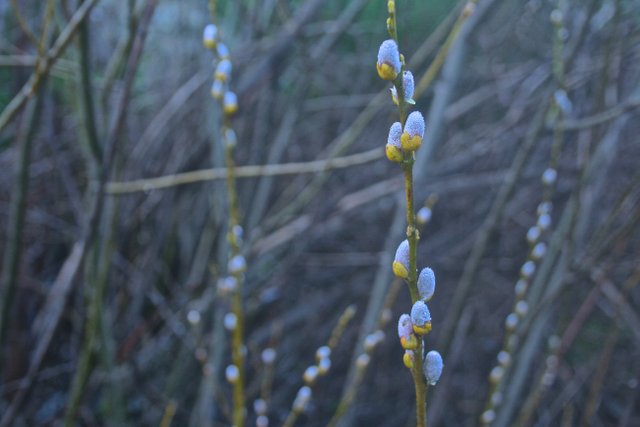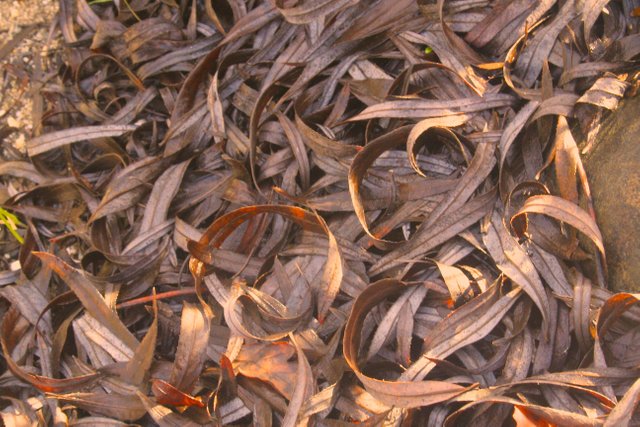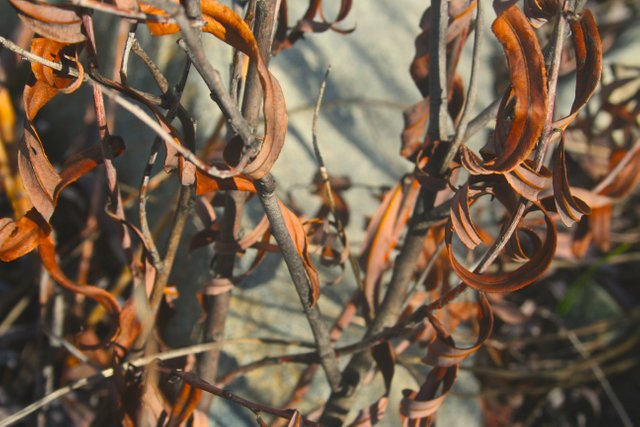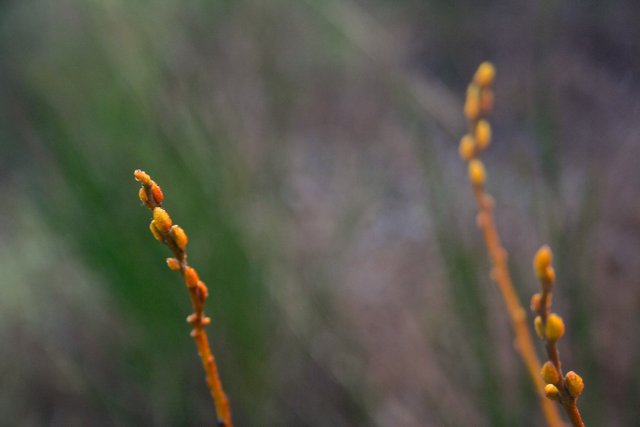DIY Pain RELIEF : Wild Willow
I'm sure ya'll have heard of aspirin.
Well did you know that the aspirin we use today was derived originally from an extract of Willow? Willow has been used by native folks where it grows as a pain-relieving remedy for thousands of years.
Some say that only 'White Willow' is to be used. This is what we mostly commonly see in health food stores but in fact most Willow species have the anti-inflammatory salicylic acid that reduces the pain that can be caused by everyday inflammations associated with minor injuries.
Willow, or the Salix genus in the Salicaceae plant family can be found in a lot of different climates and landscapes. Where it grows, it also often has a tradition of use as a basketry material. Some folks weave baskets with the bark skin on the weavers, some strip it off by gentle steaming. I have woven with it bark on- and I have seen some elder weavers take the time to remove the bark. Either way, the Willow must be dried and and then rehydrated to weave, as the drying pre-shrinks the fresh Willow so it doesn't once it is made into a basket. It must be rehydrated and then mellowed to weave.
You can smell the salicylic acid when you cut, dry, hydrate and weave the Willow strands.
To harvest for medicine, its simple. Find a Willow stand, be careful to ID it right. Willow has separate male and female flower catkins which often flower in late Winter, or early Spring, it depends on where you are located. At higher or northern elevations, it could be May when they flower.
You can harvest any time really. I just cut some branches and take a sharp knife and strip the outer bark off onto a tarp or blanket. I then chop that bark up more, and put it in a mason jar, and then pouring brandy or vodka over the chipped bark. After a few days, you can start to taste the bitter aspirin like taste.
This is not to say that Willow will 'take all your pains away' but it can certainly help. I took a capsule of it when my wisdom teeth were coming in and it really helped alleviate the pain for me.
It can be helpful for headaches, but isn't necessarily going to 'cure' a migrane, because they are caused by different things for different people.
The pictures below are of Willow in winter and coming into Spring, in northern California. The leaves are dropped Willow leaves from the year before.
The best time to harvest for baskets is in the dead of winter before the buds form. The Willow is strongest at this time, and less likely to peel or break later in weaving, and the buds tend to get in the way of weaving, not to say that it isn't possible. It just isn't as ideal.
What do you do with that Willow tincture? After a month of macerating (shaking the jar occasionally), strain the medicine through a thick cheesecloth and bottle up, taking a dropperful a few times a day as needed. You could also strip the bark and just boil in a tea, and drink it if you're camping or live near Willow.
Willow for use in gardens. It also has a natural rooting hormone, and folks even the most traditional Monsanto trained horticulturists (like my dad) have used 'Willow rooting hormone' in their fertilizer water for getting tough plants to germinate or divide.
Willow also loves the water, and grows on streams and wet areas. They can be trees, shrubs or small bushes. Where rivers swell they are naturally coppiced for the perfect basket weavers. Otherwise, humans can prune wild Willow, too.
Again, these are all my photos below, actually taken on the old mine that I discussed in a previous post! I didn't harvest this species for medicine because it was on an old mine, but I did walk every morning and watch it change slowly. Pretty cool!
(
(



Very educational post - thanks for sharing! The marvelous thing about willow too is that you can start a new plant by putting a fresh cut stick (preferably of newer growth) into moist ground and they will root. that is how they propagate themselves along the wetlands. I planted willows all along the path to our house to absorb some of the water in the bog area by the path. I've also seem people make living fences with them or cool tunnels by just sticking them in the ground and keeping them watered until they root. You can also root them by just sticking them in a glass of water.
it's that magical rooting hormone i bet! I hadn't thought of using it to hamper a boggy area. good idea. This past fall I wandered along a large river plain with a friend, before the rainy season started, harvesting basket willow and it was awesome to see how it establishes itself in the river. I want to have a garden of my own basket willow some day.. where I tend it carefully. :)
It's definitely easy to get started if you want to start a bed of it. Do you make your own baskets?
this is perfect timing for me! i have to tell you... last year my neighbor's very big and mature willow toppled over after the 100 yr flood. she successfully rerooted it, which is amazing and a testament to the power of the willow.
i had taken a cutting to try to root one, but it didn't survive the winter. but, just this evening as i was walking around the homestead, i spotted a willow! a volunteer willow (first one i've seen where our homestead is- we obvs have many near the creek, but we are a good 300 ft from that and uphill)), so it was amazing to see.
i'm curious which variety it is... but i am definitely excited to tincture some as you detail here!
Wow- about it rerooting after being toppled over. I have planted it before but it didn't like the drier soil I put it in- it was also a finicky basket willow variety- where I had taken cuttings from a friend. It lived a few years but just didn't thrive in my parent's farm's clay-like soil. it seems like identifying species of willow can be a nightmare... i've thought about tackling that botany challenge... but they hybridize so easily.
Wow this is beautiful. 💛💛💛 Willow is such a lovely plant. So feminine too dont yiu think?
We used to make lamps out of willow and paper mache.. they were seed pod like, organic lovely things. Willows a bit of a pest along waterways here sadly. But i do love her. Great for MAKING.
a pest along waterways? Like it is invasive there is isn't supposed to be there? just curious, as something that 'belongs' in one place, may not in another. then again, after I read the book 'Invasive Plant Medicine' by Timothy Lee Scott, it changed my perspective on the place of invasives.
Ill look that oneup. Yes... itsa migranthere. I dont seethem that way but ithink thsy can be problematic here.